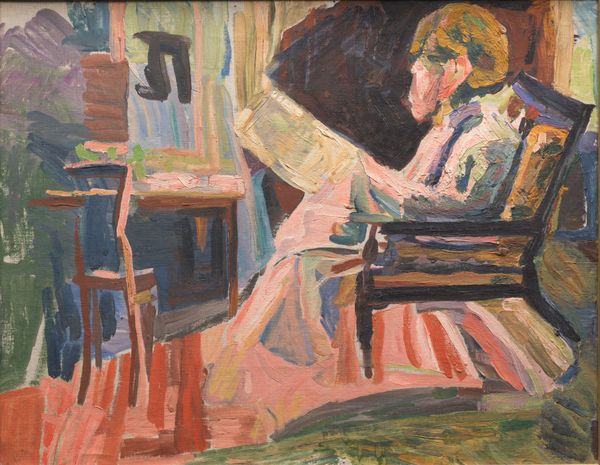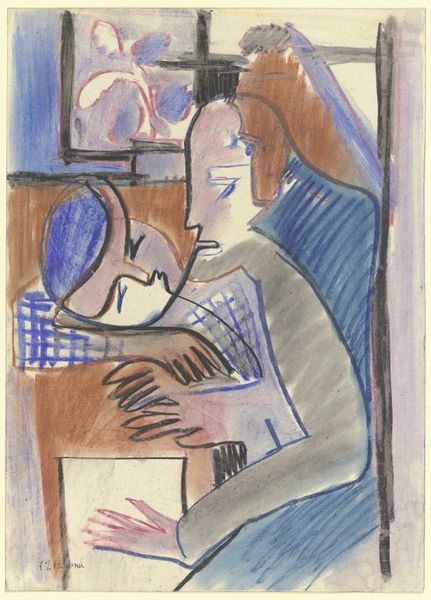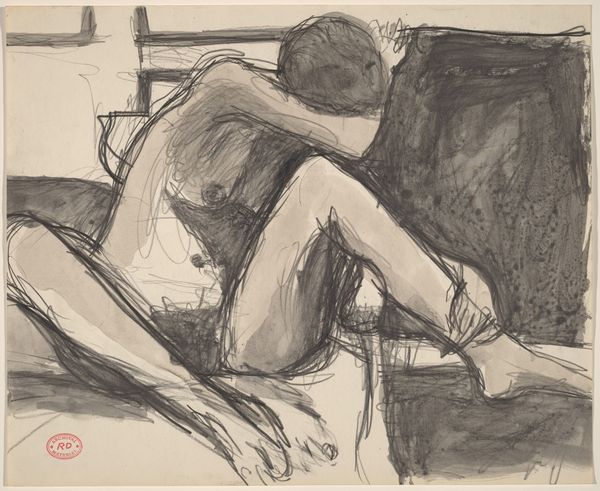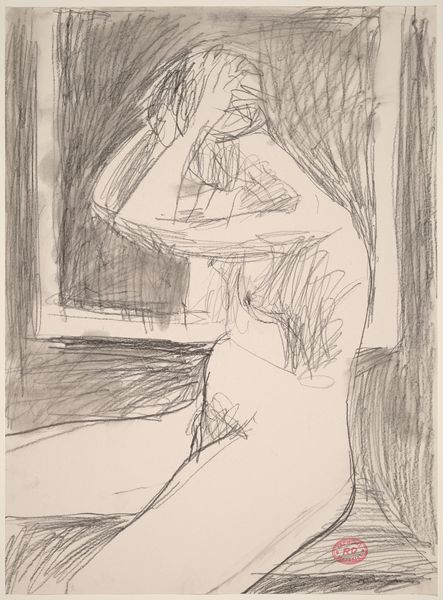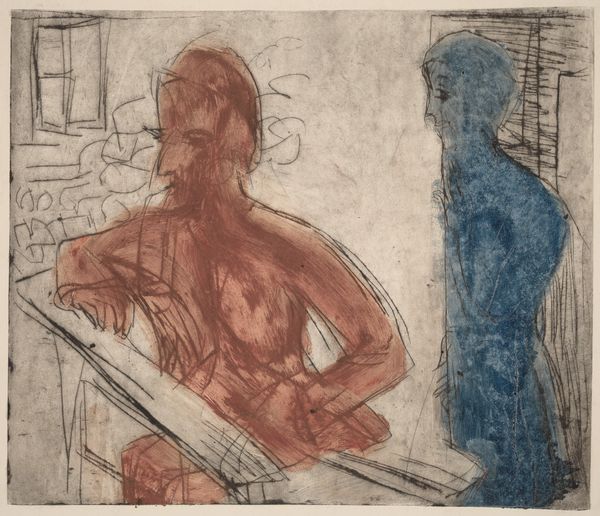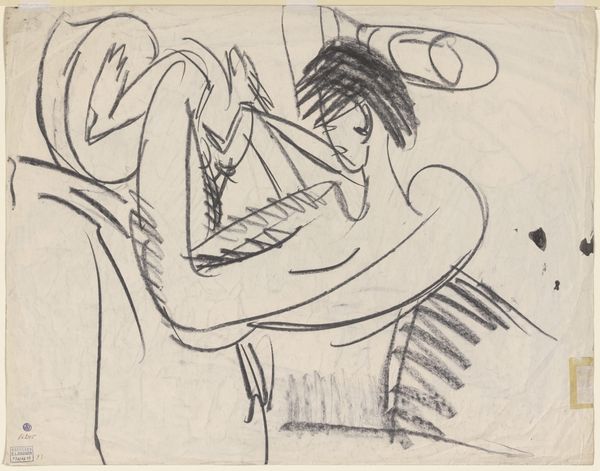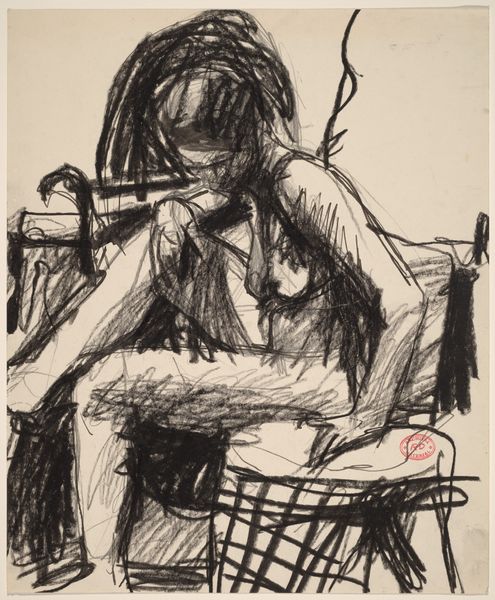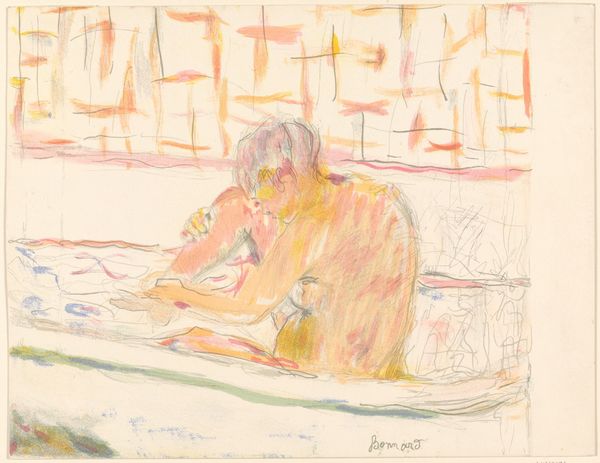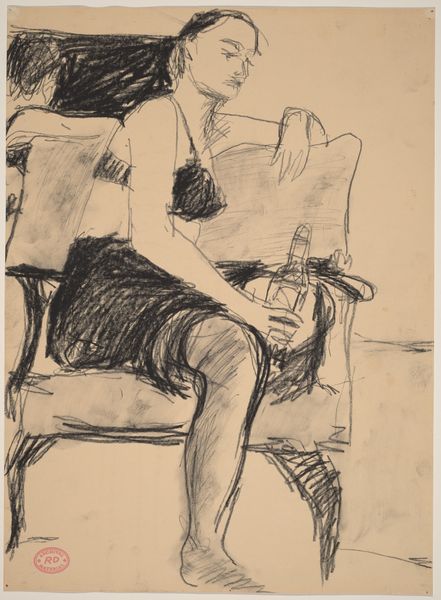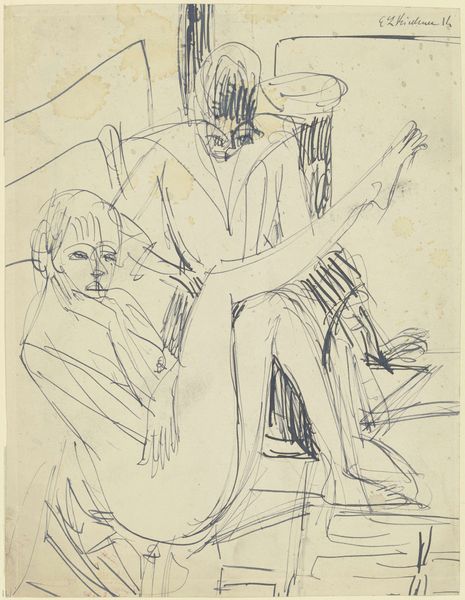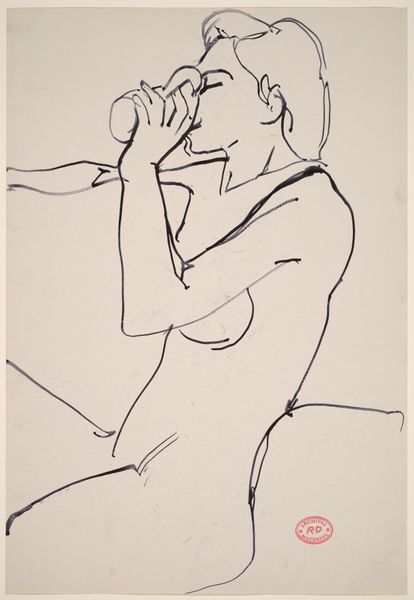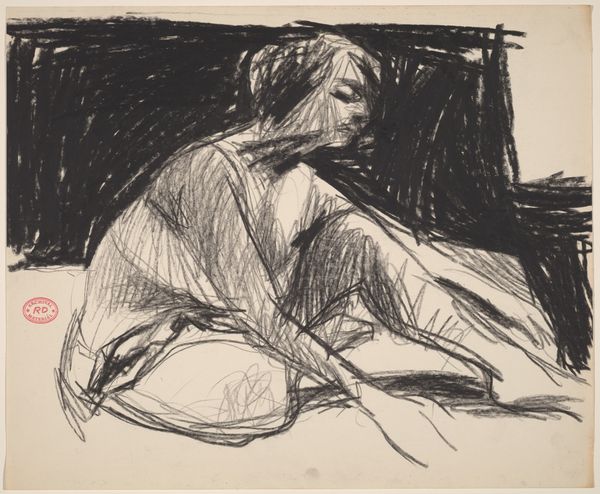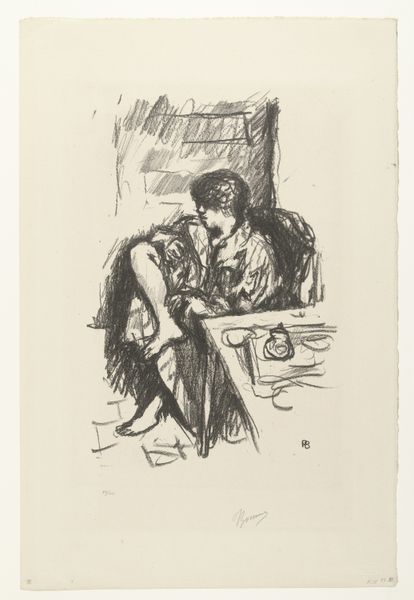
Copyright: Public Domain
Editor: Here we have Max Beckmann’s, “o.T. (Zwei lesende Mädchen),” or “Two Girls Reading,” made around 1937 or 38 using chalk and watercolor. The mood feels heavy, maybe even despairing. I'm curious – what story do you think the materials and process are telling us? Curator: It's interesting that you pick up on the mood so readily. Look at the newspaper they’re reading, *Le Temps*. This piece was made when Beckmann was living in Nazi Germany, experiencing tremendous stress and duress from being disparaged by the regime and threatened with the loss of his livelihood. That *Le Temps* – The Times – is significant, as it was one of the few newspapers in Europe at the time printing uncensored information. Editor: Ah, so the material is *also* the message! And the sketch-like quality feels very immediate, not highly finished, giving it urgency... like it was created under pressure. Curator: Exactly! It speaks to the socio-political constraints Beckmann was working under. The accessibility of chalk and paper, his quick application of paint. The 'how' and 'why' of its making, no less than the who or what of the work, creates a vivid immediacy for us as viewers today. Editor: I see that now. It's less about refined artistry, and more about a visceral need to document and share information – making art more a vital means of survival. Curator: Precisely. That act of reading, of accessing unfiltered information, and of representing this access and the freedom that flows with it, becomes a means of resistance. Even the newspaper becomes imbued with agency by the artist. The everyday becomes heroic, rendered in commonplace material to create a singular and precious visual object. Editor: That really reframes how I see the work. Now I can read between the lines to fully understand its impact. Thank you. Curator: My pleasure! Hopefully now our listeners will find something new and compelling about this drawing, as well.
Comments
No comments
Be the first to comment and join the conversation on the ultimate creative platform.
